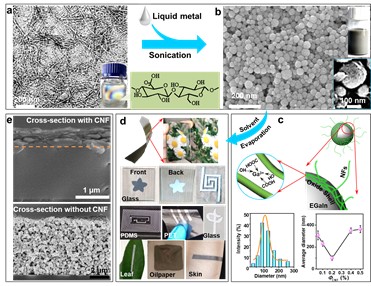发新帖
作者最近主题:
- Liquid metal initiator of ring-opening polymerization: Self-capsulation into thermal/photo-moldable powder for multifunctional composites. Advanced Materials, 2020, X. Li, M. Li, Q. Shou, L. Zhou, A. Ge, D. Pei, C. Li, DOI: 10.1002/adma.202003553.
- 【文献与实验汇报】2020年6月20号
- 甲壳素纳米纤维的非衍生化剥离及应用最新进展
- 生物质纳米纤维助力液态金属液滴蒸发烧结及其柔性智能器件构筑
- Evaporation-induced sintering of liquid metal droplets with biological nanofibrils for flexible conductivity and responsive actuation X Li, M Li, J Xu, J You, Z Yang, C Li, Nature Communications, 2019, https://doi.org/10.1038/s41467-019-11466-5
- 课题组韩祥生、徐洁毕业聚餐
- 祝贺韩祥生博士和徐洁硕士顺利通过研究生学位论文答辩!
- An ultra-stable gold-coordinated protein cage displaying reversible assembly

